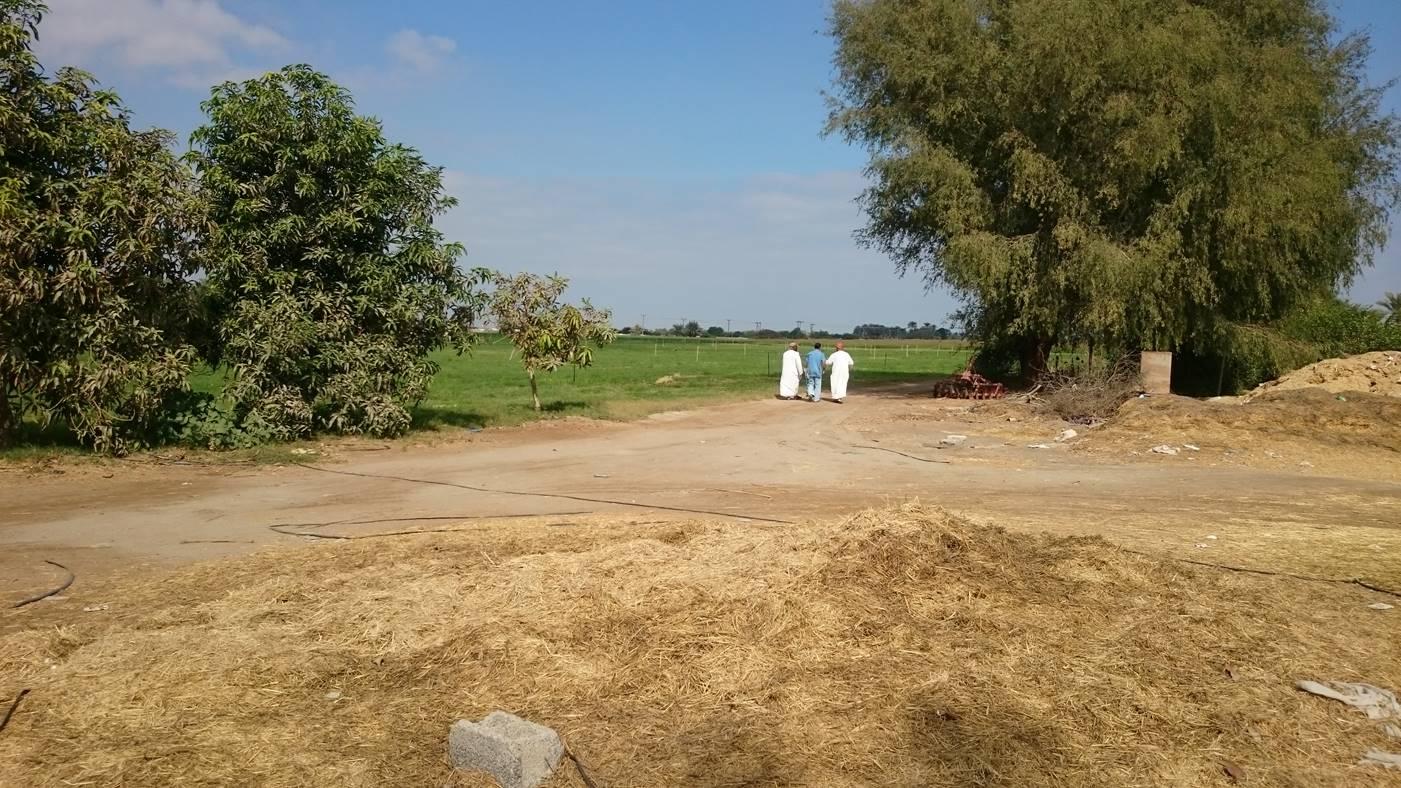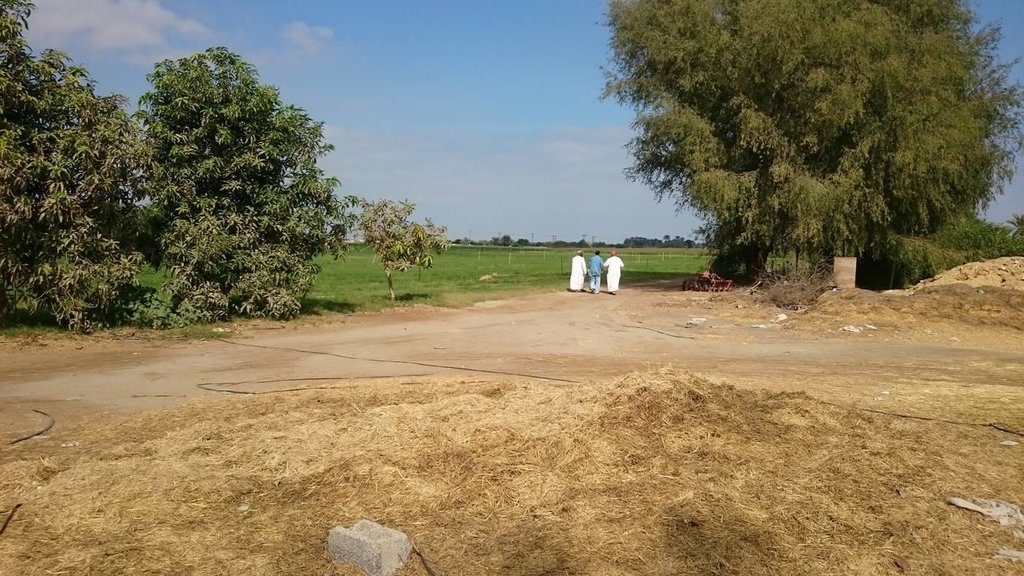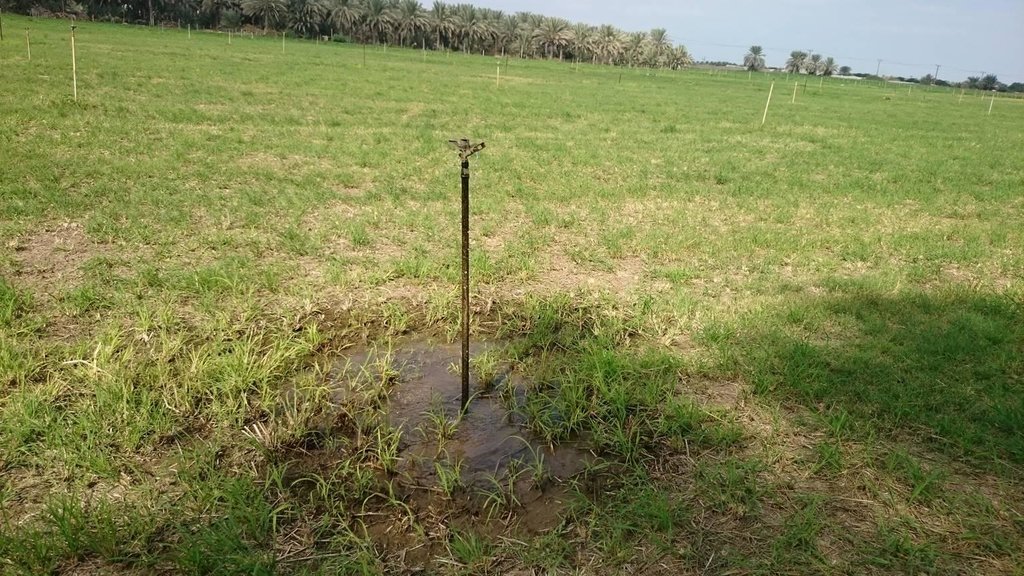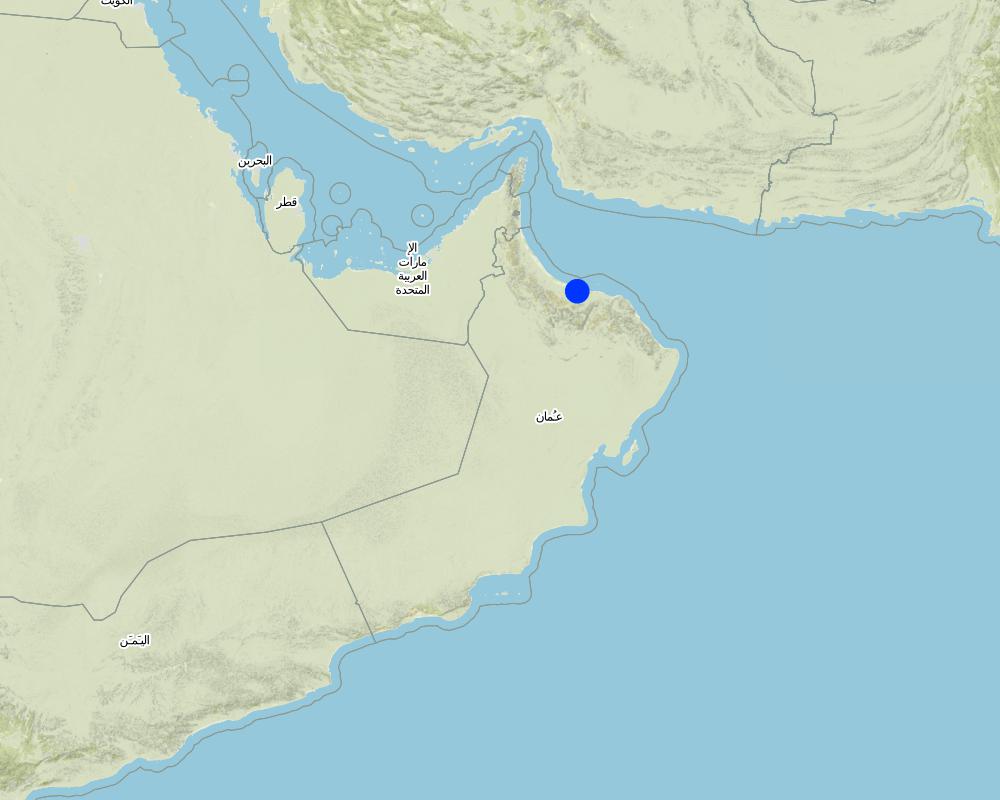Compost and inorganic fertilizer in saline soils [Oman]
- Creation:
- Update:
- Compiler: Badria Alhosni
- Editor: –
- Reviewers: David Streiff, Alexandra Gavilano
أستخدام الأسمدة العضوية والغير عضوية في الترب المتملحه
technologies_1313 - Oman
View sections
Expand all Collapse all1. General information
1.2 Contact details of resource persons and institutions involved in the assessment and documentation of the Technology
Key resource person(s)
SLM specialist:
SLM specialist:
SLM specialist:
SLM specialist:
SLM specialist:
SLM specialist:
AL Abri Fatima
MOAF
Oman
SLM specialist:
AlWehaibi Hamdan
Oman
1.3 Conditions regarding the use of data documented through WOCAT
The compiler and key resource person(s) accept the conditions regarding the use of data documented through WOCAT:
Yes
2. Description of the SLM Technology
2.1 Short description of the Technology
Definition of the Technology:
Improving fertility of saline soil applying combination of organic and inorganic fertilizers
2.2 Detailed description of the Technology
Description:
The total area where the technology implemented is 70 feddan. the farm is 35 years since it is established. there are also 4 green houses. There are 2 pumps for pumping irrigation. organic and inorganic fertilizers are used in this farm. crops grown are leafy crops.(onion, alfalfa, Rhodes Grass, Lemon , Date Palm, cassava)
Purpose of the Technology: to improve the productivity of soils under saline conditions . Salinity level of irrigated water is about 2.24 dS/m.
Establishment / maintenance activities and inputs: Land preparation is done before planting by plowing and harrowing. then the fertilizer applied before planting. Crops are cultivated by special machinery. The crops are also weeded manually.
Natural / human environment: the technology is implemented in nearly level land. Irrigation water is from wells. the farm is situated in locality where similar small holding are found in the surroundings.
2.3 Photos of the Technology
2.5 Country/ region/ locations where the Technology has been applied and which are covered by this assessment
Country:
Oman
Region/ State/ Province:
AlBatinah South
Further specification of location:
AlMusinah
Specify the spread of the Technology:
- evenly spread over an area
If the Technology is evenly spread over an area, specify area covered (in km2):
0.294
If precise area is not known, indicate approximate area covered:
- 0.1-1 km2
Comments:
Total area covered by the SLM Technology is 0.294 km2.
Map
×2.6 Date of implementation
If precise year is not known, indicate approximate date:
- 10-50 years ago
2.7 Introduction of the Technology
Specify how the Technology was introduced:
- through land users' innovation
3. Classification of the SLM Technology
3.1 Main purpose(s) of the Technology
- improve production
3.2 Current land use type(s) where the Technology is applied

Cropland
- Annual cropping
- Perennial (non-woody) cropping
- Tree and shrub cropping
Number of growing seasons per year:
- 2
Specify:
Longest growing period from month to month: Sep to Jan; econd longest growing period from month to month: Jan to May
Comments:
Major land use problems (compiler’s opinion): productivity decline, fertility decline and The quality of water is decline
Major land use problems (land users’ perception): decreasing yield due to old age of the farm
Future (final) land use (after implementation of SLM Technology): Cropland: Ca: Annual cropping
3.3 Has land use changed due to the implementation of the Technology?
Has land use changed due to the implementation of the Technology?
- Yes (Please fill out the questions below with regard to the land use before implementation of the Technology)

Cropland
- Annual cropping
3.4 Water supply
Water supply for the land on which the Technology is applied:
- full irrigation
3.5 SLM group to which the Technology belongs
- integrated soil fertility management
- improved plant varieties/ animal breeds
3.6 SLM measures comprising the Technology

agronomic measures
- A2: Organic matter/ soil fertility

vegetative measures
- V2: Grasses and perennial herbaceous plants

management measures
- M2: Change of management/ intensity level
Comments:
Type of agronomic measures: better crop cover, manure / compost / residues, mineral (inorganic) fertilizers, minimum tillage
Type of vegetative measures: aligned: -along boundary, aligned: -linear, scattered / dispersed, in blocks
3.7 Main types of land degradation addressed by the Technology

chemical soil deterioration
- Cn: fertility decline and reduced organic matter content (not caused by erosion)
Comments:
Main causes of degradation: soil management, change in temperature, population pressure
Secondary causes of degradation: crop management (annual, perennial, tree/shrub), droughts, labour availability
3.8 Prevention, reduction, or restoration of land degradation
Specify the goal of the Technology with regard to land degradation:
- prevent land degradation
- reduce land degradation
Comments:
Secondary goals: prevention of land degradation
4. Technical specifications, implementation activities, inputs, and costs
4.1 Technical drawing of the Technology
Technical specifications (related to technical drawing):
Technical knowledge required for field staff / advisors: low
Technical knowledge required for land users: moderate
Main technical functions: increase in organic matter
Secondary technical functions: improvement of ground cover, increase in nutrient availability (supply, recycling,…), increase of biomass (quantity)
Aligned: -contour
Vegetative material: G : grass
Aligned: -along boundary
Vegetative material: T : trees / shrubs
Aligned: -linear
Vegetative material: C : perennial crops
Scattered / dispersed
Vegetative material: F : fruit trees / shrubs
In blocks
Vegetative material: C : perennial crops, G : grass
Change of land use practices / intensity level: crop rotation
4.2 General information regarding the calculation of inputs and costs
other/ national currency (specify):
OMR
If relevant, indicate exchange rate from USD to local currency (e.g. 1 USD = 79.9 Brazilian Real): 1 USD =:
0.39
4.4 Costs and inputs needed for establishment
| Specify input | Unit | Quantity | Costs per Unit | Total costs per input | % of costs borne by land users | |
|---|---|---|---|---|---|---|
| Labour | Labour | unit | 1.0 | 1268.0 | 1268.0 | |
| Equipment | Machine use | unit | 1.0 | 15544.0 | 15544.0 | |
| Total costs for establishment of the Technology | 16812.0 | |||||
| Total costs for establishment of the Technology in USD | 43107.69 | |||||
4.6 Costs and inputs needed for maintenance/ recurrent activities (per year)
| Specify input | Unit | Quantity | Costs per Unit | Total costs per input | % of costs borne by land users | |
|---|---|---|---|---|---|---|
| Labour | Labour | unit | 1.0 | 570.0 | 570.0 | |
| Total costs for maintenance of the Technology | 570.0 | |||||
| Total costs for maintenance of the Technology in USD | 1461.54 | |||||
4.7 Most important factors affecting the costs
Describe the most determinate factors affecting the costs:
Labour , salinity
5. Natural and human environment
5.1 Climate
Annual rainfall
- < 250 mm
- 251-500 mm
- 501-750 mm
- 751-1,000 mm
- 1,001-1,500 mm
- 1,501-2,000 mm
- 2,001-3,000 mm
- 3,001-4,000 mm
- > 4,000 mm
Agro-climatic zone
- arid
Thermal climate class: subtropics
5.2 Topography
Slopes on average:
- flat (0-2%)
- gentle (3-5%)
- moderate (6-10%)
- rolling (11-15%)
- hilly (16-30%)
- steep (31-60%)
- very steep (>60%)
Landforms:
- plateau/plains
- ridges
- mountain slopes
- hill slopes
- footslopes
- valley floors
Altitudinal zone:
- 0-100 m a.s.l.
- 101-500 m a.s.l.
- 501-1,000 m a.s.l.
- 1,001-1,500 m a.s.l.
- 1,501-2,000 m a.s.l.
- 2,001-2,500 m a.s.l.
- 2,501-3,000 m a.s.l.
- 3,001-4,000 m a.s.l.
- > 4,000 m a.s.l.
5.3 Soils
Soil depth on average:
- very shallow (0-20 cm)
- shallow (21-50 cm)
- moderately deep (51-80 cm)
- deep (81-120 cm)
- very deep (> 120 cm)
Soil texture (topsoil):
- coarse/ light (sandy)
Topsoil organic matter:
- low (<1%)
If available, attach full soil description or specify the available information, e.g. soil type, soil PH/ acidity, Cation Exchange Capacity, nitrogen, salinity etc.
Soil fertility is low
Soil drainage / infiltration is good
Soil water storage capacity is low
5.4 Water availability and quality
Ground water table:
> 50 m
Availability of surface water:
poor/ none
Water quality (untreated):
for agricultural use only (irrigation)
5.6 Characteristics of land users applying the Technology
Market orientation of production system:
- mixed (subsistence/ commercial)
Off-farm income:
- 10-50% of all income
Relative level of wealth:
- average
Individuals or groups:
- individual/ household
Level of mechanization:
- manual work
- mechanized/ motorized
Gender:
- men
Indicate other relevant characteristics of the land users:
Land users applying the Technology are mainly common / average land users
5.7 Average area of land used by land users applying the Technology
- < 0.5 ha
- 0.5-1 ha
- 1-2 ha
- 2-5 ha
- 5-15 ha
- 15-50 ha
- 50-100 ha
- 100-500 ha
- 500-1,000 ha
- 1,000-10,000 ha
- > 10,000 ha
Is this considered small-, medium- or large-scale (referring to local context)?
- medium-scale
5.8 Land ownership, land use rights, and water use rights
Land ownership:
- individual, not titled
Land use rights:
- communal (organized)
Water use rights:
- communal (organized)
5.9 Access to services and infrastructure
health:
- poor
- moderate
- good
education:
- poor
- moderate
- good
technical assistance:
- poor
- moderate
- good
markets:
- poor
- moderate
- good
energy:
- poor
- moderate
- good
roads and transport:
- poor
- moderate
- good
drinking water and sanitation:
- poor
- moderate
- good
6. Impacts and concluding statements
6.1 On-site impacts the Technology has shown
Socio-economic impacts
Production
fodder quality
animal production
Water availability and quality
drinking water availability
drinking water quality
water availability for livestock
water quality for livestock
irrigation water availability
irrigation water quality
demand for irrigation water
Income and costs
expenses on agricultural inputs
farm income
diversity of income sources
workload
Socio-cultural impacts
food security/ self-sufficiency
health situation
cultural opportunities
recreational opportunities
community institutions
national institutions
SLM/ land degradation knowledge
conflict mitigation
situation of socially and economically disadvantaged groups
livelihood and human well-being
Comments/ specify:
The use of organic fertilizers improve the quality of soil and the crop production increase due to the soil fertility.Crop rotation may prevents the soil from degradation
Ecological impacts
Water cycle/ runoff
water quantity
water quality
Soil
soil moisture
6.2 Off-site impacts the Technology has shown
downstream flooding
groundwater/ river pollution
6.3 Exposure and sensitivity of the Technology to gradual climate change and climate-related extremes/ disasters (as perceived by land users)
Gradual climate change
Gradual climate change
| Season | increase or decrease | How does the Technology cope with it? | |
|---|---|---|---|
| annual temperature | increase | not well |
Climate-related extremes (disasters)
Meteorological disasters
| How does the Technology cope with it? | |
|---|---|
| local rainstorm | not well |
Climatological disasters
| How does the Technology cope with it? | |
|---|---|
| drought | not well |
6.4 Cost-benefit analysis
How do the benefits compare with the establishment costs (from land users’ perspective)?
Short-term returns:
neutral/ balanced
Long-term returns:
slightly positive
How do the benefits compare with the maintenance/ recurrent costs (from land users' perspective)?
Short-term returns:
slightly negative
Long-term returns:
neutral/ balanced
7. References and links
7.1 Methods/ sources of information
Links and modules
Expand all Collapse allLinks
No links
Modules
No modules





